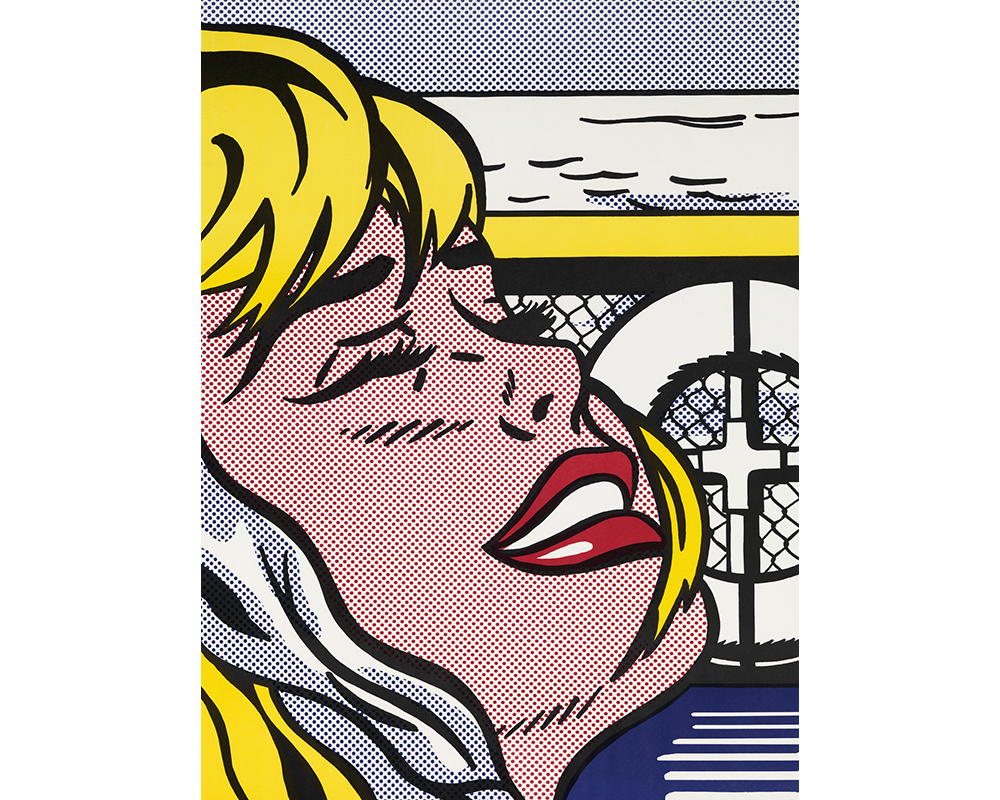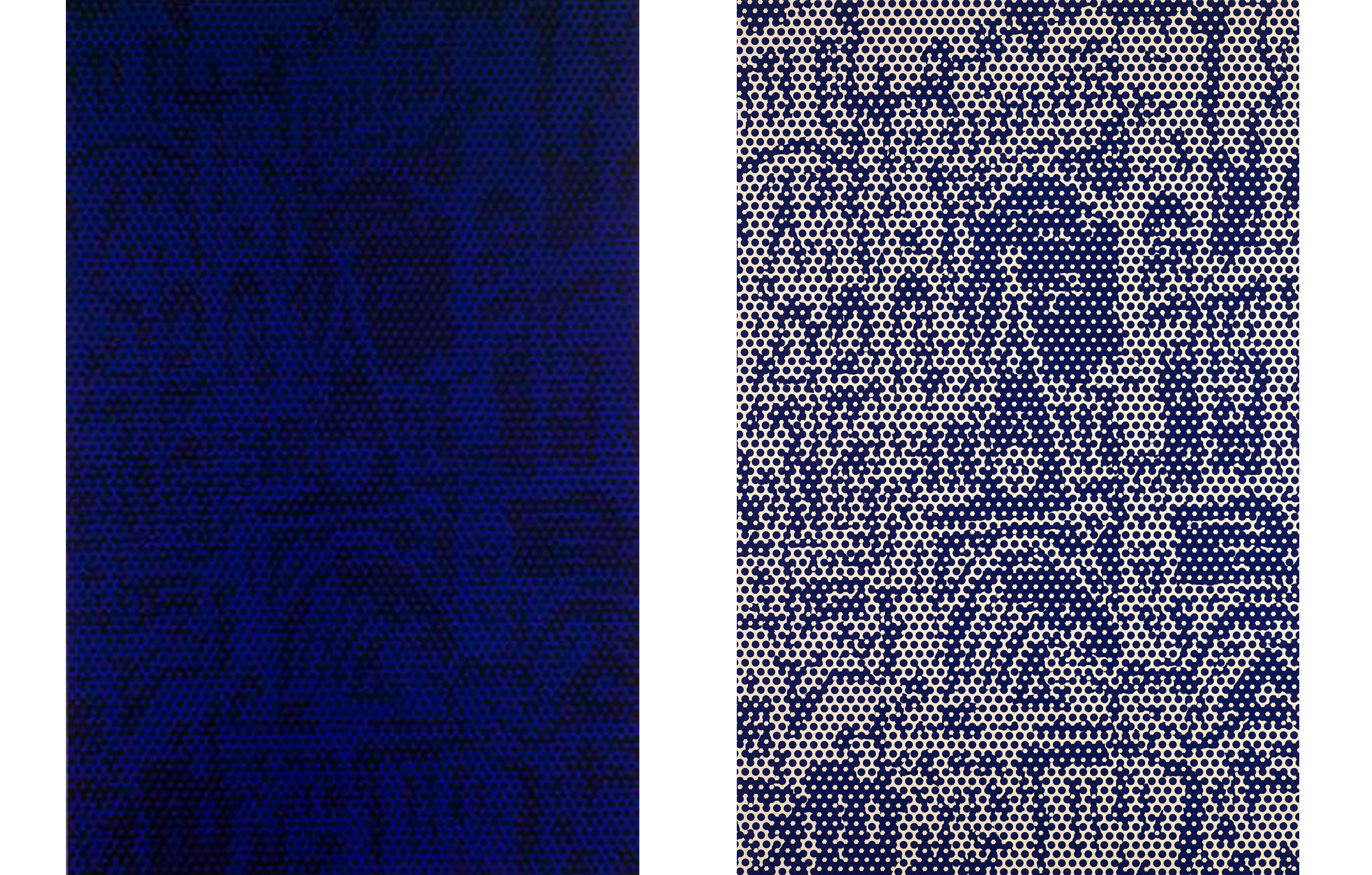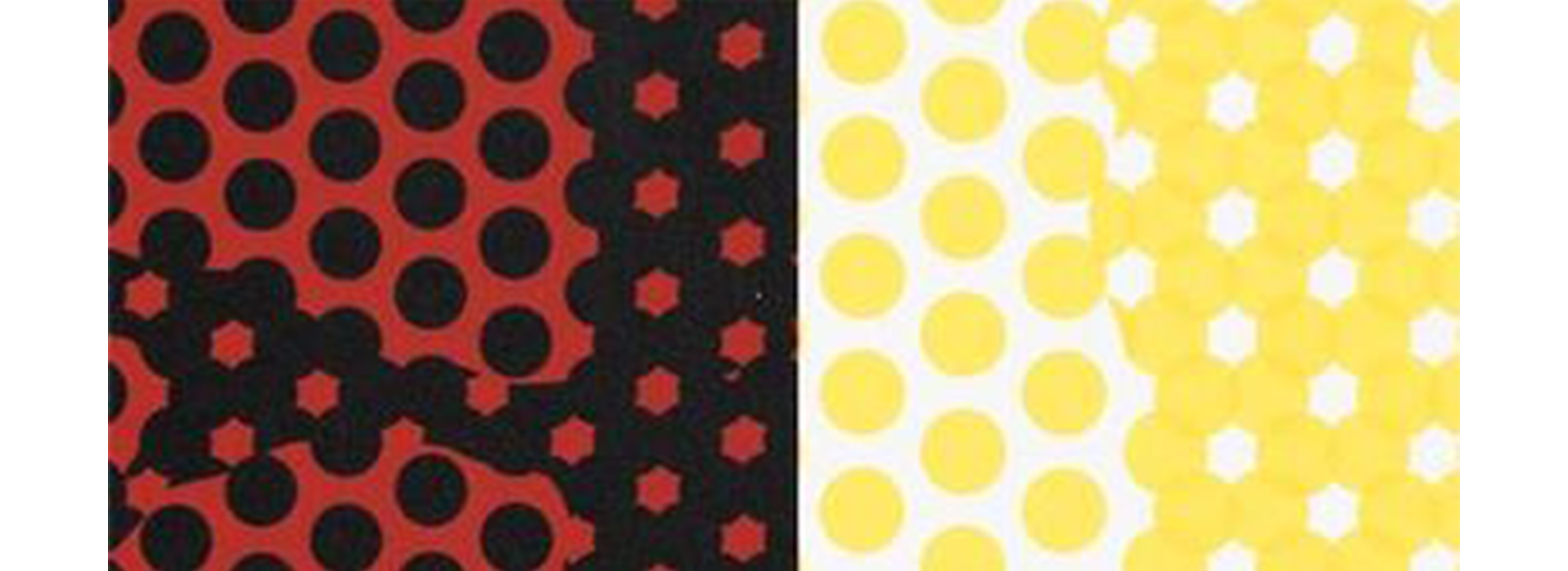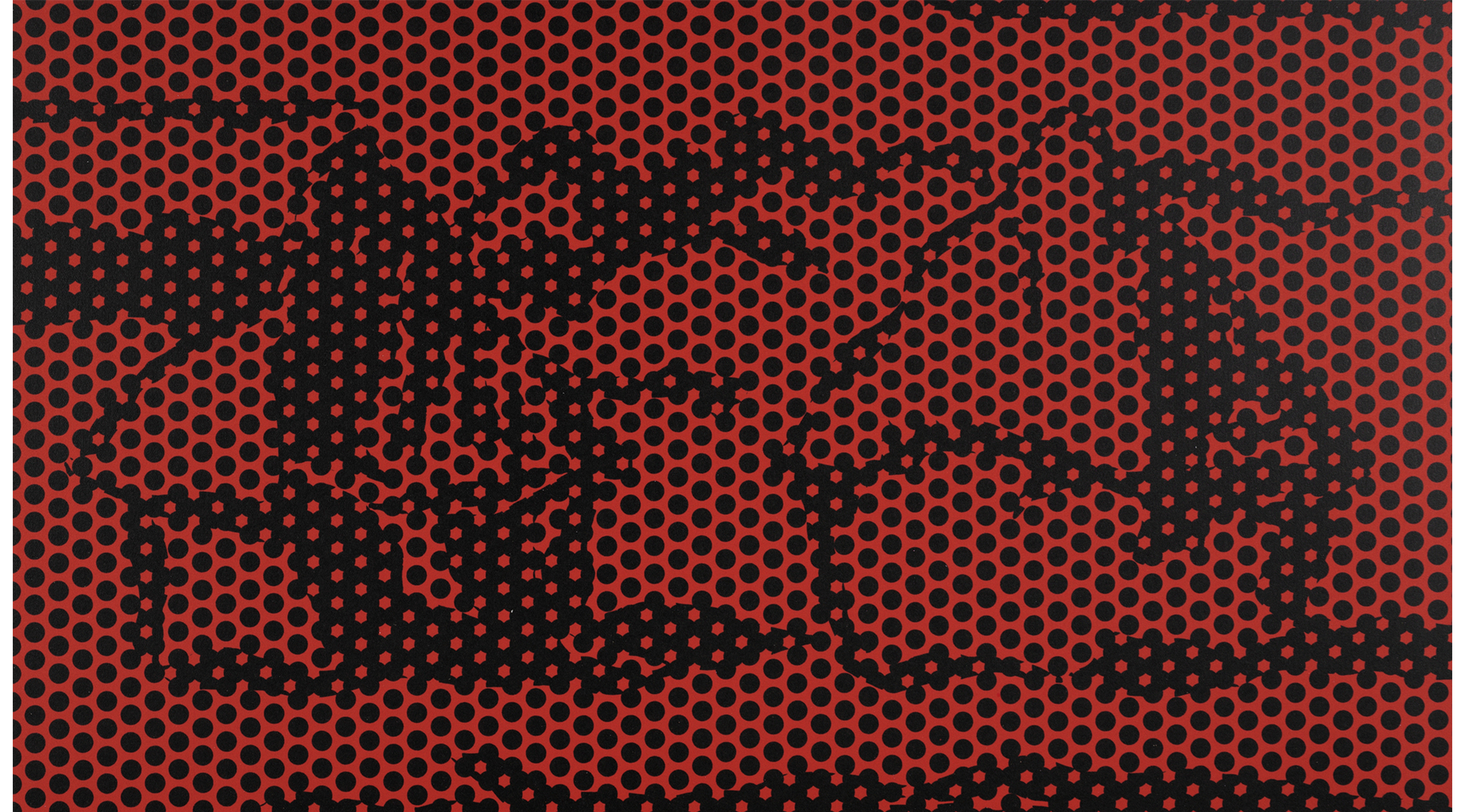
Roy Lichtenstein
Julie Warchol was the 2012-2013 Brown Post-Baccalaureate Curatorial Fellow in the Cunningham Center.
Following a long tradition of artists who beg, borrow, and steal elements from other artists, Roy Lichtenstein was a master of creating art about art stemming from both so-called “high” and “low” culture. While he is most famous for his 1960s Pop paintings and prints which appropriate comic strip imagery such as Ship-board Girl (pictured above), he also created a vast body of work which both reference and transform images by other artists. In 1962, only one year following his first comic strip images, Lichtenstein painted pastiches based on works by Cézanne, Picasso, and Mondrian. In 1969, his appropriation (or what he often called “vulgarization”) of other artists’ work continued with his two print series Cathedrals and Haystacks, based on the iconic paintings by French Impressionist Claude Monet. (Click to see examples of Monet’s Cathedrals and Haystacks).

Left: Roy Lichtenstein. American, 1923–1997. Cathedral #6 from the series Cathedral, 1969. Lithograph printed in blue and black on special Arjomari paper. Gift of Naomi and Stephen Antonakos. Photography by Petegorsky/Gipe. SC 2002.25.1.
Right: Roy Lichtenstein. American, 1923–1997. Cathedral #3, 1969. Lithograph printed in blue on special Arjomari paper. Gift of John Russell. Photography by Petegorsky/Gipe. SC 1976.43.5.
Lichtenstein’s Cathedrals and Haystacks are immediately recognizable to those familiar with Monet’s Rouen Cathedral and Giverny haystacks paintings from the 1890s, yet these prints are remarkably abstracted and peculiar. As in his comic strip images, the broad areas of color imitate Ben-Day dots, a technique used in newspaper commercial printing in which blocks of colors are broken down into tiny dots. Lichtenstein enlarges these dots so much that the images are difficult to see clearly. Similarly to Monet’s paintings, these prints are most legible at a distance and increasingly abstract the closer one gets to the image. Such close looking reveals Lichtenstein’s intricate and dazzling system of Ben-Day dots which are overlaid to create darker tones (see details).

Details of Ben-Day dots in Haystack #6 (left) and Haystack #1 (right).

Left to right: Roy Lichtenstein’s Cathedral #3, Cathedral #6, and Cathedral #2 (1969).
Lichtenstein's complex use of color in his Cathedrals and Haystacks creates even more confusing visual effects. While he adheres to a simple palette of colors – red, blue, yellow, and black – they are dizzying when combined in each image. For example, in Cathedral #2 (above), the combination of red and blue dots renders the image almost entirely illegible. In these prints, Lichtenstein reduces Monet’s nuanced and varied studies of light to incredibly flat reproductions of paintings, nothing more. Surprisingly, however, they still evoke the visual sensation of distinct times of day as in Monet’s original paintings. In Cathderal #3 (above), blue dots on white paper read as dusk, while in Cathedral #6(below) the combination of blue and black reads as late evening or night. Red and black dots in Haystack #6 create the impression of dusk on a warm summer evening, while in Haystack #1 yellow on white paper evokes the blinding sunlight of high noon.

Roy Lichtenstein. American, 1923–1997. Haystack #6, 1969. Lithograph in red and black on Rives BFK paper. Purchased. Photography by Petegorsky/Gipe. SC 1972.5.5.

Roy Lichtenstein. American, 1923–1997. Haystack #1, 1969. Lithograph and screenprint in two colors on Rives BFK paper. Gift of Janice Carlson Oresman, class of 1955. Photography by Petegorsky/Gipe. SC 1986.55.3.